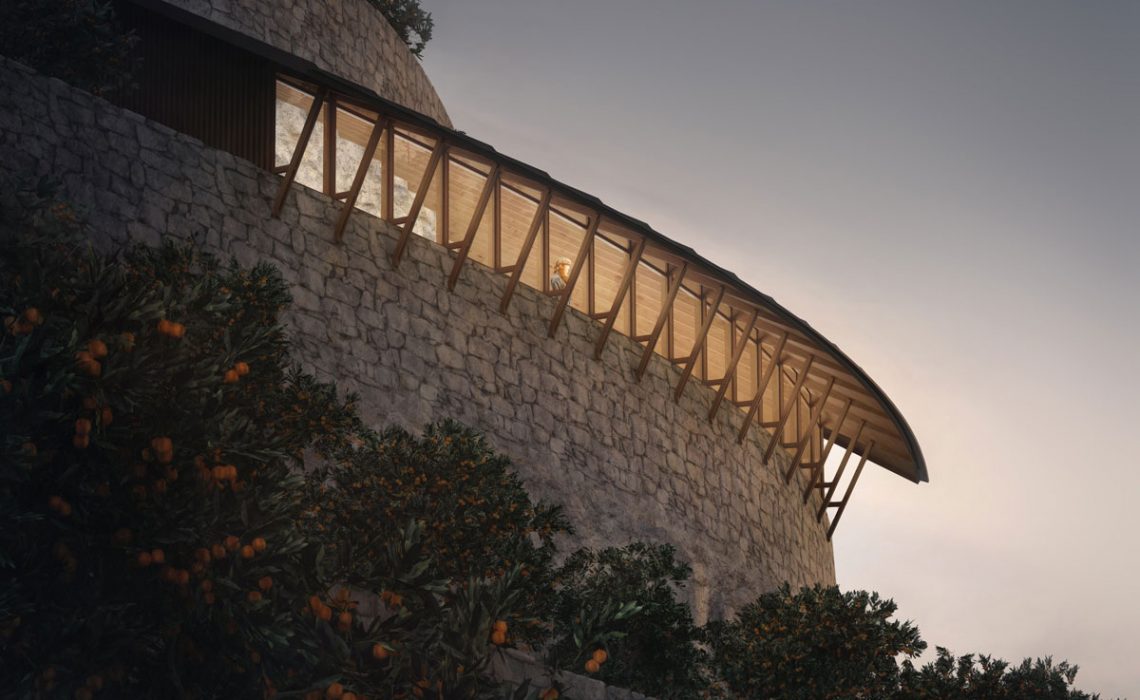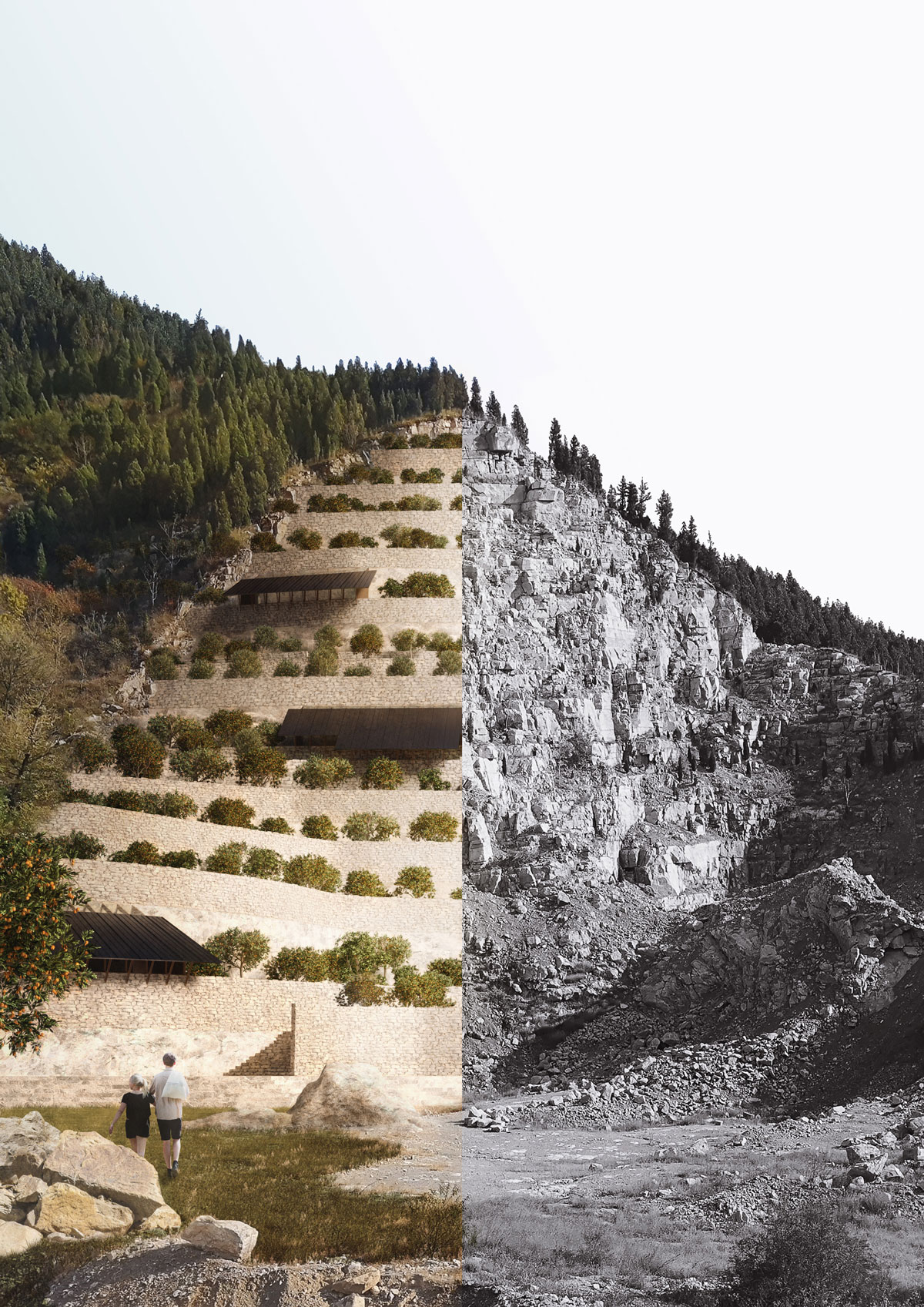
The city district of Zibo, the third largest by population within the Shandong province, has been a key stone mining location till recent years. The excavation activities, particularly focused on the Zichuan subdistrict, marked the rural areas of the province with invasive interventions and disruptions of the local ecosystem. The mountainous area is today characterized by woodlands, villages, mine pits and quarries in stone.
The local government and investors aim to develop a strategic vision that would reinforce local communities and bring new life to the site. The project should attract tourists and creatives around a protected and restored ecological zone, while generating a new economy for local artisans and rural entrepreneurs. Particular emphasis is posed on the issue of the dismissed mines, which constitute a unique feature but also a great challenge.
How can the ecological and spatial damage be mitigated and transformed into new value?

The aim of the project is to re-connect the mines with the environment through a metamorphosis of the existing orography into a natural terraced ecosystem.
This new cultural landscape will host tourists and guide them through a natural experience while learning the importance of a more and more fragile nature and discovering the produces and background history.

Additional closed spaces represent both a functional support and cultural spaces with permanent or temporary exhibitions to promote the regional craftsmen mastering ceramics and textile art. The wooden structures adapt to the different mines shapes, that are the core element, carved like a sculpture. An important resource for the past turns into a strategic vision of renaissance for the area and local communities.
The preliminary research about the site highlighted a district that is characterized by deep knowledge about agricultural techniques that continuously evolve and a long heritage on building techniques using local stone.
The design approach chosen for mines restoration was re-using existing local resources and re-invent the purpose of the area. In order to do this, the project study focused on the architecture of terraces, how they work and how they match the different unique sites in order to make it accessible and repurpose it.
Every block of stone has a statue inside it and it is the task of the sculptor to discover it.
Michelangelo Buonarroti